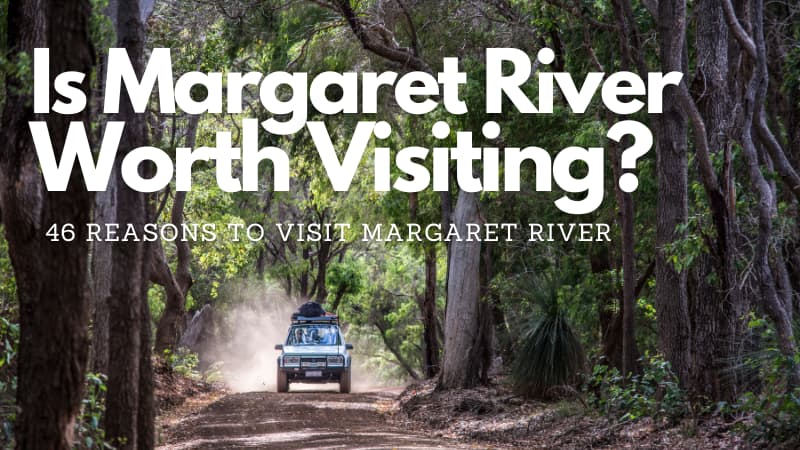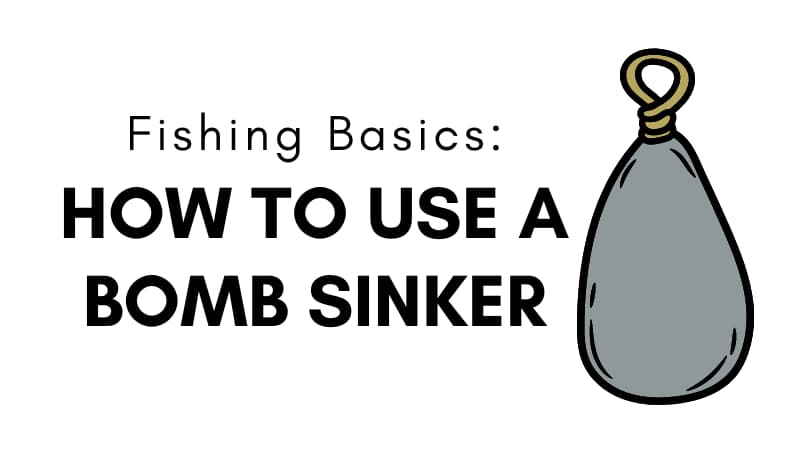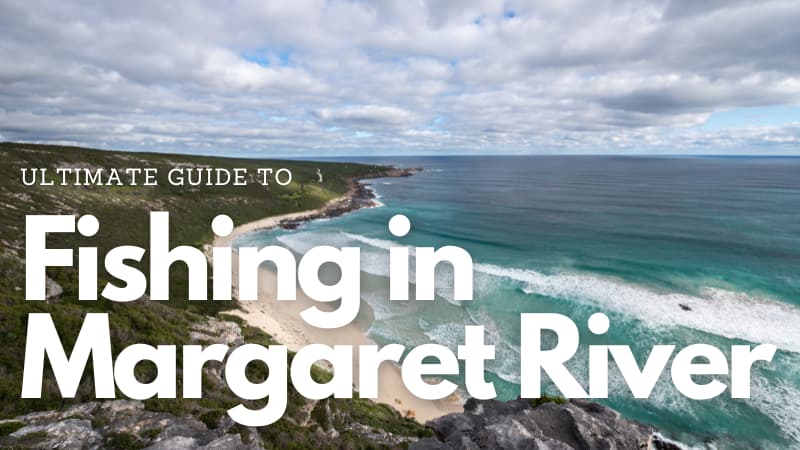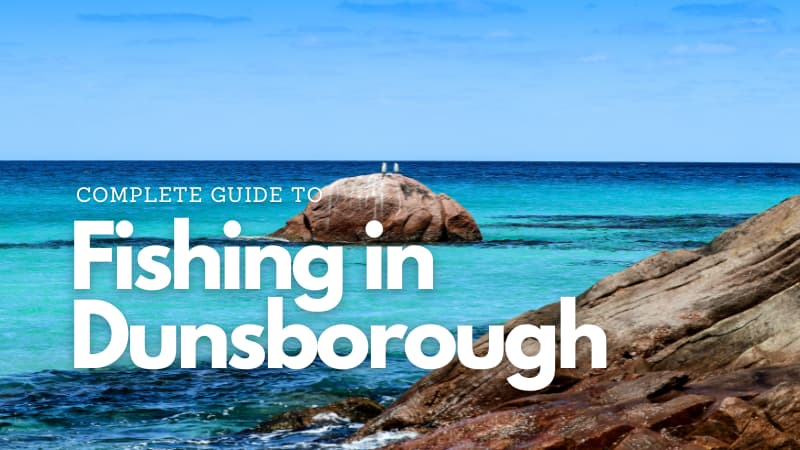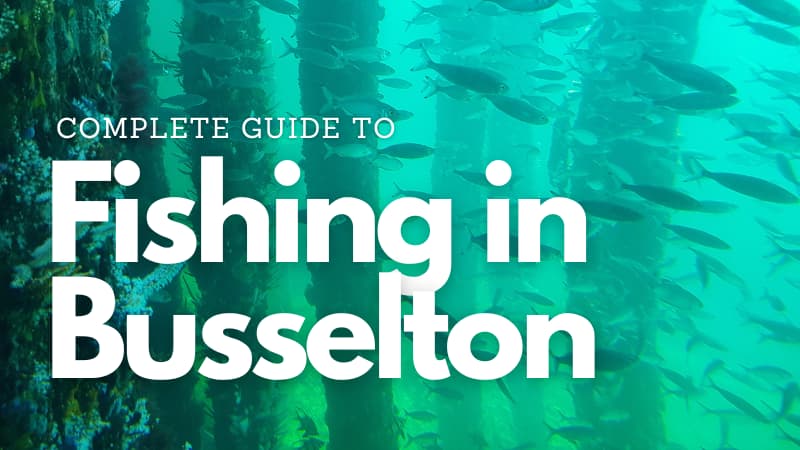Walyunga National Park is located just 35 km northeast of Perth in the Perth Hills. Its stunning landscape of rolling hills, granite outcrops, stunning forested scenery and the rapids of Avon Valley make it a special place to explore.
Why Visit Walyunga National Park?
Walyunga National Park is where the Avon River joins with Wooroloo Brook to form the beginning of the Swan River. This 1800 hectare national park within the Darling Ranges is a must-visit. The word Walyunga roughly translates to ‘Happy Place’ and the name certainly fits!
The Traditional Custodians of the land are the Whadjuk People. The area has a rich and important cultural past – groups from the York-Toodyay, Darling Ranges, Moore River and Mundaring areas held meetings and settled disputes in the Walyunga National Park area. The region provided shelter, chert and quartz for making tools and an abundant food supply which included kangaroos, frogs, crayfish and goannas.
Today Walyunga National Park is enjoyed as a weekend escape, providing plenty of outdoor recreation activities such as hikes, watersports like kayaking and canoeing, camping and fishing. The picturesque scenery is also home to plenty of unique flora and fauna and the park is an excellent place to go wildflower spotting in Spring.
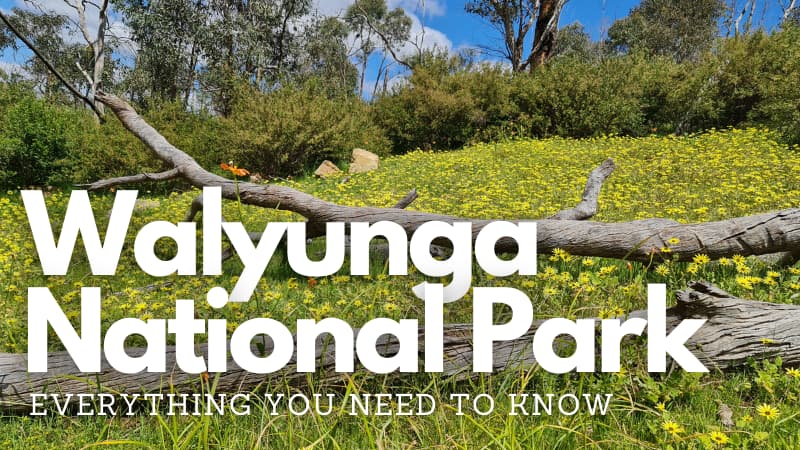
How To Get To Walyunga National Park
Walyunga National Park is located 35 km northeast of Perth CBD. Take the 45-minute drive along Tonkin Highway, turn onto Gnangara Road, take a left onto West Swan Road, turn left onto Great Northern Highway and follow this down until you reach Walyunga Road – take a right and follow it until you reach the car park.
The gates are open between 8 am to 5pm daily.
Things To Do At Walyunga National Park
It’s easy to spend a whole day out at Walyunga National Park, here are all the best things to do in the park.
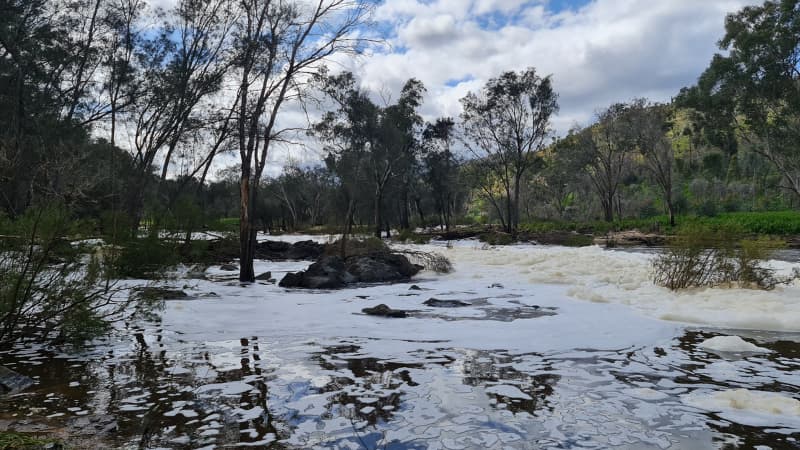
Hike The Walyunga National Park Trails
You can’t visit the park without taking a bushwalk. The Walyunga National Park walks are my personal favourite in all of Perth. You’ll get the chance to walk through different landscapes and plenty of opportunities to take in the spectacular scenery. The trails are well-signed and the paths are clear. Here’s everything you need to know about the Walyunga National Park walk trails.
Echidna Trail
Length: 11 km loop
Duration: approx. 5 hours
Trail marker: Black
Class: 3 – good level of fitness and bushwalking experience is recommended as it includes rough, loose and very steep sections.
The Echidna Trail in Walyunga National Park is hands down my favourite hike in Perth! It’s an 11 km loop that should take around 5 hours.
The hike begins from the Walyunga Pool car park – look for the sign of the map to get your bearings and follow the black trail markers.
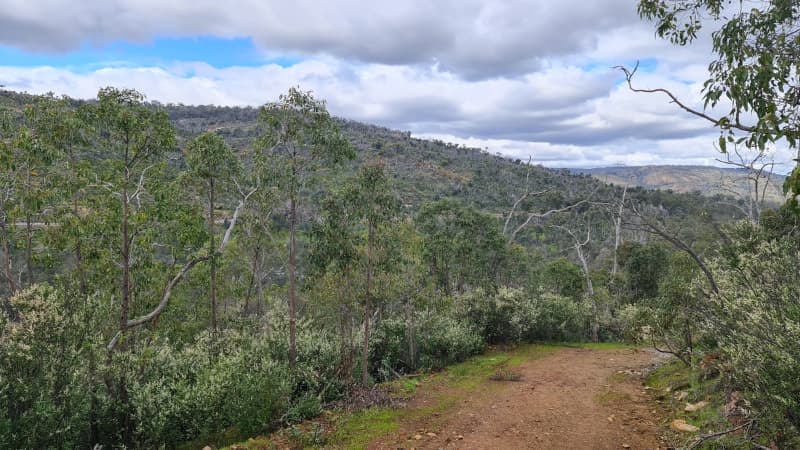
The trail starts with an easy walk along the Avon River, there are plenty of spots to stop and check out the rapids and snap a beaut pic. The trail then makes a steep ascent into the bush. Although challenging, your hard work will pay off as you’re rewarded with stunning views of the Avon Valley. This is a great spot to stop for a picnic lunch with supreme views.
After the steep part at the start, the hike becomes much easier and you’ll be in for an enjoyable walk through the bush.
This trail is chock full of wildflowers in late winter and spring.
Keep in mind there isn’t a lot of tree cover over the path so make sure you’re prepared for the heat and sun if you tackle this one during the summer months.
The Echidna Trail is just challenging enough that you’ll feel like you’ve earned your post-hike beer!
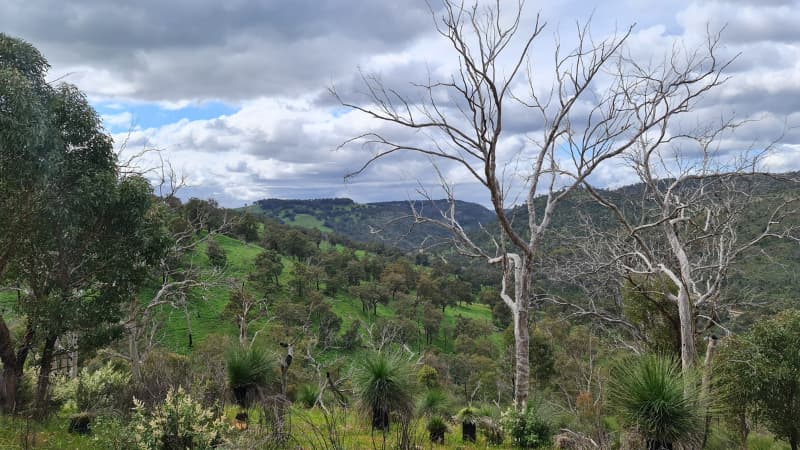
Syd’s Rapids and Aboriginal Heritage Trail
Length: 5.1 km return
Duration: 1-3 hours
Class: 2 – Easy, well-defined walk
The Syd’s Rapids and Aboriginal Heritage Trail are two trails that are normally combined. Dotted along the path is signage explaining the area’s rich aboriginal past, so you can learn about the area on your hike.
The Aboriginal Heritage Trail (0.8 km) is first and starts from the Walyunga Pool car park and meanders along the river. There’s signage along the way that explains the plants, animals, myths and legends of the area, from an Aboriginal perspective.
Once you make it to Boongarup Pool, it becomes the Syd’s Rapids trail which continues for another 1.75 km along the river to Syd’s Rapids.
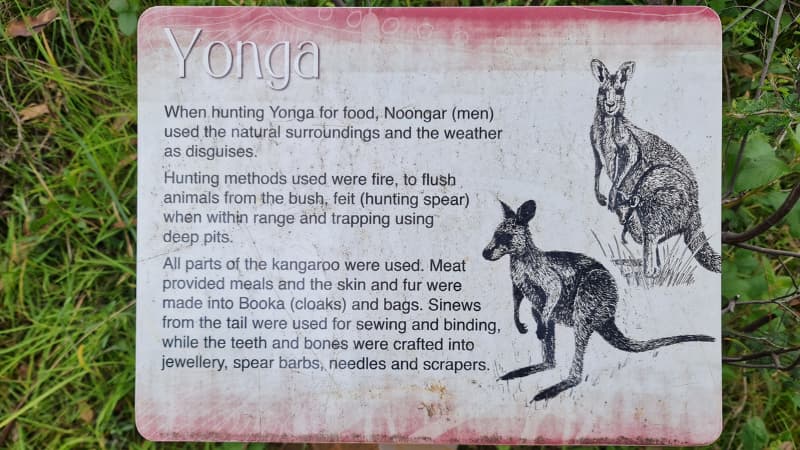
Once you’ve explored the rapids it’s time to turn around to complete the return journey to the carpark.
Kangaroo Trail
Length: 4 km Loop
Duration: 2 hours
Trail marker: Green
Class: 3 – Some loose ground, steep sections and slippery rocks.
The Kangaroo trail also starts from the Walyunga Pool car park. It begins by following the river before looping around through bushland and finishing back at the car park. There are plenty of pretty spots to stop and take a photo or just enjoy the peaceful scenery.
The path is mostly compacted gravel and is fairly easy to navigate. There isn’t a lot of tree cover over the path so it’s probably best not to do this one during the heat of the middle of the day.
Kingfisher Trail
Length: 6 km loop
Duration: 3 hours
Trail marker: Blue
Class: 3 – Some loose ground, steep sections and slippery rocks.
The Kingfisher Trail also starts at the Walyunga Pool car park. You’ll follow the blue trail markers up the river to Syd’s Rapids, before making a steep ascent into the woodland.
The path is compacted gravel and fairly easy to follow. There are some picturesque places to stop along the way and soak up nature.
Chill At Boongarup Pool
Boongarup Pool is downstream from Syd’s Rapids. The tranquil waters of the pool are surrounded by flooded gums. Here you can sit back and spot the resident duck varieties and other water birds such as cormorants that call the pool home.
It’s the perfect spot to stop and take a break after a big hike, soak up the scenery or have a picnic.
Here you’ll find BBQ’s, picnic tables and a public toilet.
Kayaking And Canoeing
Walyunga National Park is where the Wooroloo and Avon meet to form the start of the Swan River. The rapids in the area are a popular spot for kayaking and canoeing. There are also more tranquil areas for less experienced kayakers and canoers to explore.
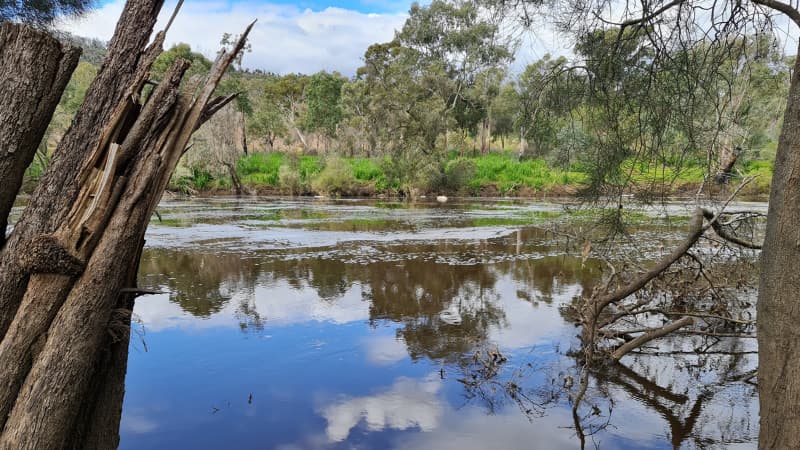
Relax At Walyunga Pool
Walyunga Pool is another idyllic spot to sit back and relax amongst the flooded gums while you overlook the peaceful river.
You’ll find BBQ’s toilets and picnic tables in the area.
Watch the Avon Descent
The Avon Descent is a white-water paddling event held in August each year. It’s a two day course that starts in Northam and runs all the way to Bayswater in Perth.
There are plenty of great viewing spots, but Walyunga National Park is one of the best. Just get in early as the carpark fills up quickly!
Birdwatching
Walyunga National Park is a birdwatcher’s paradise!
Avid ornithologists can spot a variety of ducks and other water birds like cormorants along the water’s edge. Other species such as parrots, galahs, black-faced cuckoos and magpies are commonly spotted throughout the park.
Go Wildflower Spotting
Walyunga National Park is my favourite spot to check out the wildflowers in Perth. Wildflower season is around September – November each year (depending on amount of rainfall).
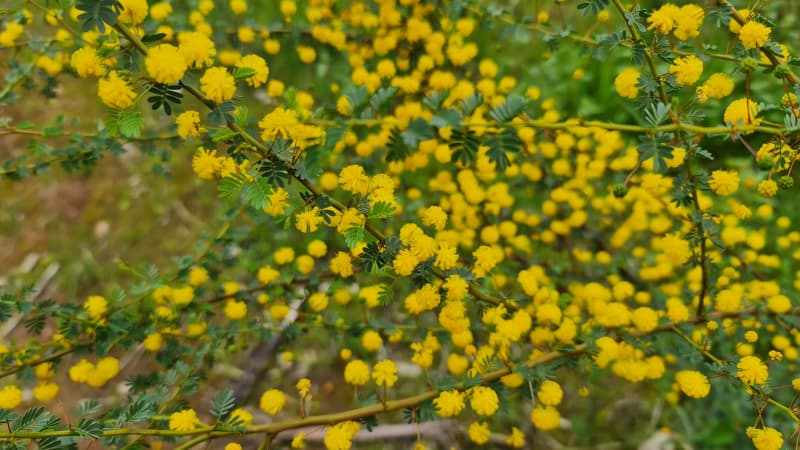
The fields surrounding the river come alive with colour as many varieties of wildflower start to bloom. Visitors will see 12 species of orchid, grevilleas, isopogons, verticordias, hakeas and petrophiles.
Visiting the park during wildflower season is an absolute must!
Have a Picnic
Pack a cute picnic lunch and grab some great mates for a picnic out at Walyunga National Park.
Boongarup Pool and Walyunga Pool have dedicated picnic areas that have beautiful views of the river and they’ve both got picnic tables, BBQ’s and toilets.
I’ve also seen people hike along the Echidna Trail and stop at the top of the first steep ascent for a picnic lunch with spectacular views of the river and valleys below. This would be a great spot for a romantic picnic – very cute date idea! But keep in mind you’ll have to carry your lunch a little further and up the steep incline.
Spot The Local Plant and Wildlife
Walyunga National Park is home to Grey kangaroos, goannas, magpies, geckos and galahs.
Plant life includes flooded gums which grow along the river banks and jarrah that grows along the high ridges; wandoo, marri and powderbark can also be commonly spotted throughout the park.
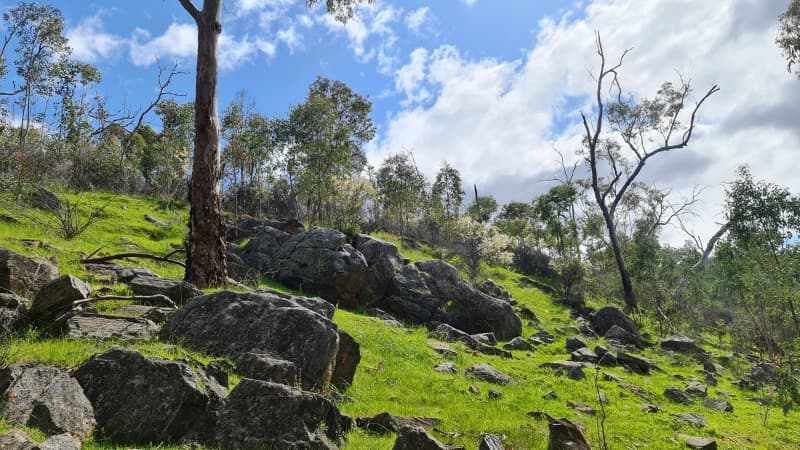
If you visit during wildflower season you’ll be lucky enough to spot plenty of variety including grevilleas, hakeas, banksia, hibbertias as well as a whopping 12 orchid species.
Just remember to be respectful of the wildlife – all natural objects (including pretty flowers) are important to the habitat of native birds and animals. Please don’t feed any birds or other animals.
Walyunga National Park Camping
There is a small campsite at Walyunga National Park that’s to the left as you pass through the gate.
The campground is open from April to November (It’s closed over summer due to fire risk).
There are 5 unpowered campsites that are suitable for tents or swags and campsite facilities include pit toilets, picnic tables and a fire ring. There’s no drinking water on site so be prepared.
Bookings are essential and can be made up to 6 months before arrival. Head to the Park Stay website to check availability and book.
Camping Fees
As well as the vehicle park entry fees, camping fees per person apply.
Standard fees:
- Adult: $11.00
- Child: $3.00
Concession Fees:
- Adult: $7.00
- Child: No concession
Walyunga National Park Opening Hours
Walyunga National Park is open daily from 8:00 am to 5:00 pm.
The gate to the park is closed each evening at 5:00 pm so ensure you plan enough time, especially if you’re doing the 11 km echidna trail.
Walyunga National Park Entry Fees
Normal park entry fees apply at Walyunga National Park.
Standard fees:
- Standard vehicle (12 people or less) – $15.00 per vehicle
- Large vehicle (more than 12 people) – $7.00 per person
- Motorcycle – $8.00
Concession fees:
- Standard vehicle (12 people or less) – $8.00 per vehicle
- Large vehicle (more than 12 people) – $2.50 per person
- Motorcycle – No concession
There are also annual or holiday national park passes available for avid explorers. For More information on WA park Entry Fees head to the Explore Parks website.
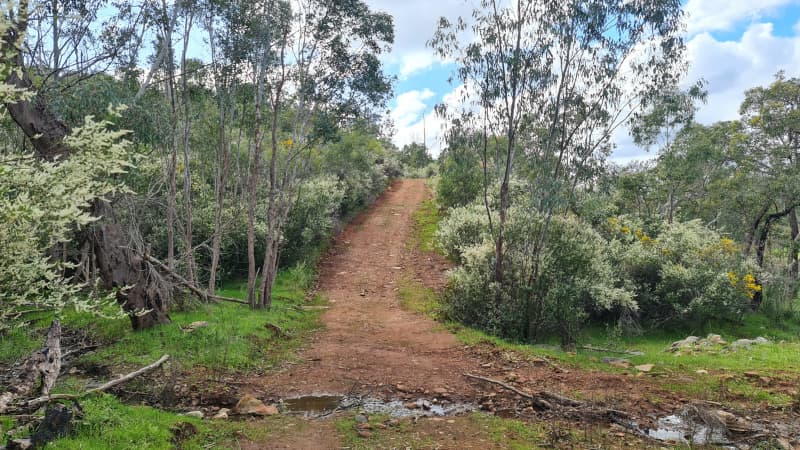
Walyunga National Park Facilities
You’ll find the following public facilities at Walyunga National Park including:
- BBQ’s
- Picnic tables
- Toilets
Are Dogs Allowed At Walyunga National Park?
Dogs (and other pets) are not permitted at Walyunga National Park.
1080 poison baits are used throughout the park to reduce feral cat and fox numbers and these can be fatal to dogs. The presence of dogs can also cause the native animals of the park great stress so it’s best to leave them at home for this one
If you’re looking for a pet-friendly hike near Perth, why not check out Bells Rapids or Lesmurdie Falls.
Walyunga National Park Safety
As with any National Park visit it’s important to keep safety in mind. Here are some things to consider for a safe and enjoyable day out at Walyunga National Park:
- Check weather conditions before heading out
- Check for park alerts and warnings before arriving
- Wear sturdy footwear and be aware if loose surfaces
- Stay sun smart – wear sunscreen, hat, long sleeves and sunglasses
- Stay safe around the water – rocks can be slippery and rapids can flow fast
- Trains pass through the area – be aware of train tracks
- Bring plenty of water, 3-4 litres per person is recommended
- If camping, be aware of campfire rules and fire ban times
Best Time To Visit Walyunga National Park
The best time to visit Walyunga National Park depends on personal preference and the activities you want to participate in. Here’s all the info on the park during different seasons.
Spring
Spring (September to November) is my personal favourite time to visit the park. The park comes alive with colourful blooms during wildflower season. It’s a great time to visit for nature photography and milder temperatures allow pleasant conditions for bush walking.
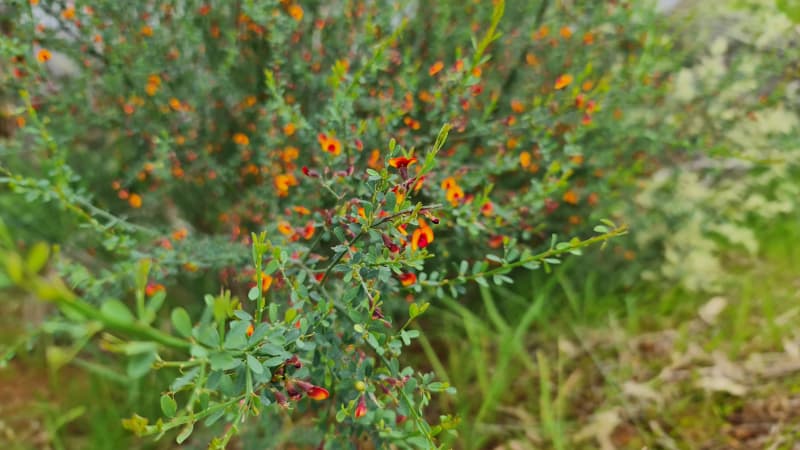
Summer
In summer (December to February) days are longer and the warm weather makes it a great time to relax next to the river and participate in activities like kayaking and canoeing. The weather can get pretty hot near the middle of the day though, so it’s not the best time for bushwalking. There is also greater bushfire risk during this season.
Autumn
Autumn (March to May) brings cooler temperatures and is a great time for bushwalking
Winter
Winter (June to August) is rainy and cool. On clearer days the cooler temperatures make it a great time to go hiking through the park, just be careful as trails can be muddy and slippery. The rapids are flowing due to the rain, making the river a spectacular site.
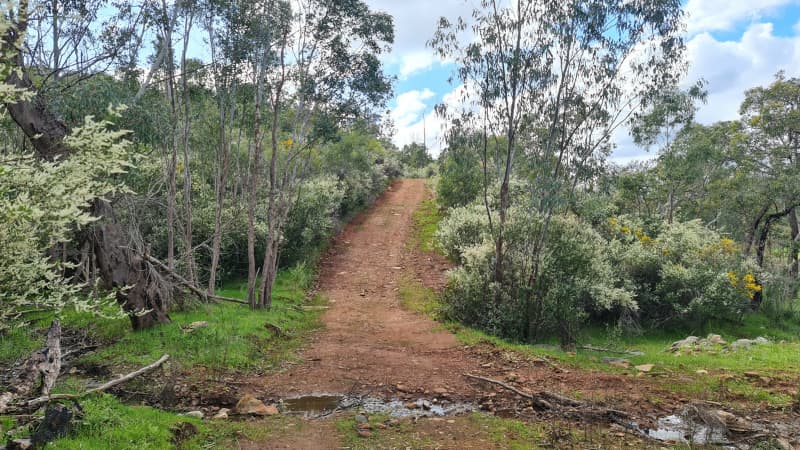
Last Words On Walyunga National Park
Walyunga National Park in the Perth Hills is the perfect destination for an outdoor escape in Perth! Spend the day hiking, picnicking next to the river or exploring the water by kayak. Spot the plants and animals that call the park home and learn about the rich history of the area.
More Weekend Inspiration
Looking for the best outdoor activities Perth has to offer? Head out for a hike at Bells Rapids, Lesueur National Park or Lesmurdie Falls.
If outdoor wildlife experiences are your thing check out whale watching in Dunsborough, visit the Hamelin Bay stingrays or go snorkelling in Exmouth.
Walyunga National Park FAQ
Swimming is allowed in certain designated areas at Walyunga National Park – just be aware that rocks can be slippery and the water can flow quickly, especially during winter.
Walyunga National Park opens at 8 am.
Walyunga National Park is home to a variety of animals including grey kangaroos, goannas, and a huge variety of birds such as galahs, magpies, ducks and cormorants.
Walyunga National Park has a rich history, it served as a meeting and camping place for different Aboriginal groups. It was an important place as it provided shelter, resources for making tools and a rich food supply.
No, dogs are not permitted at John Forrest National Park.


